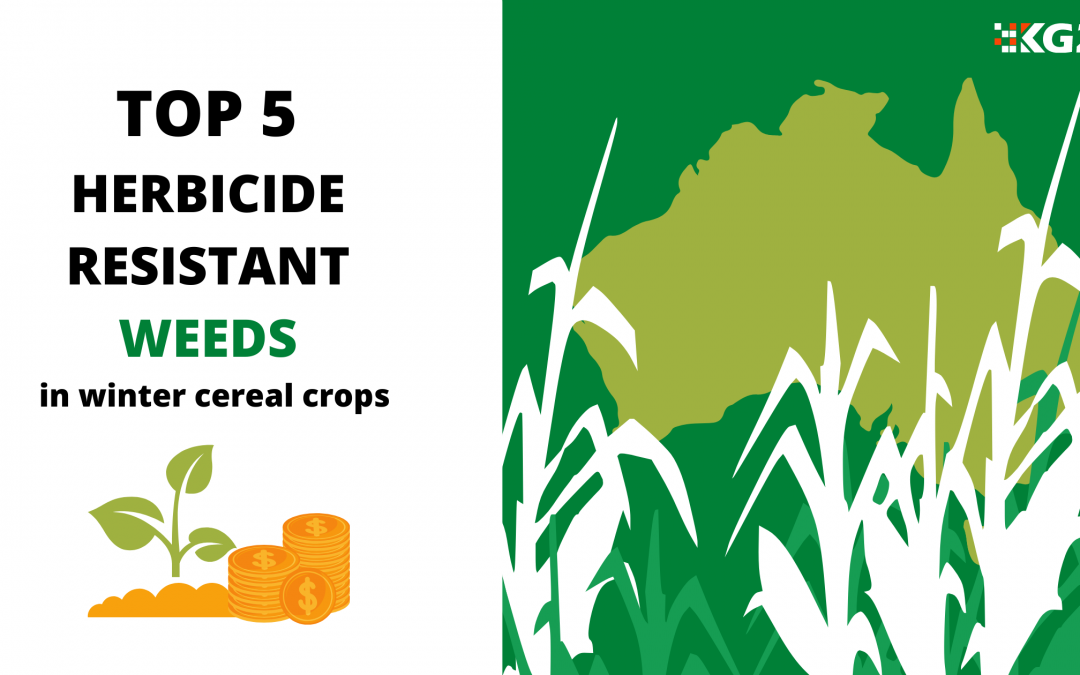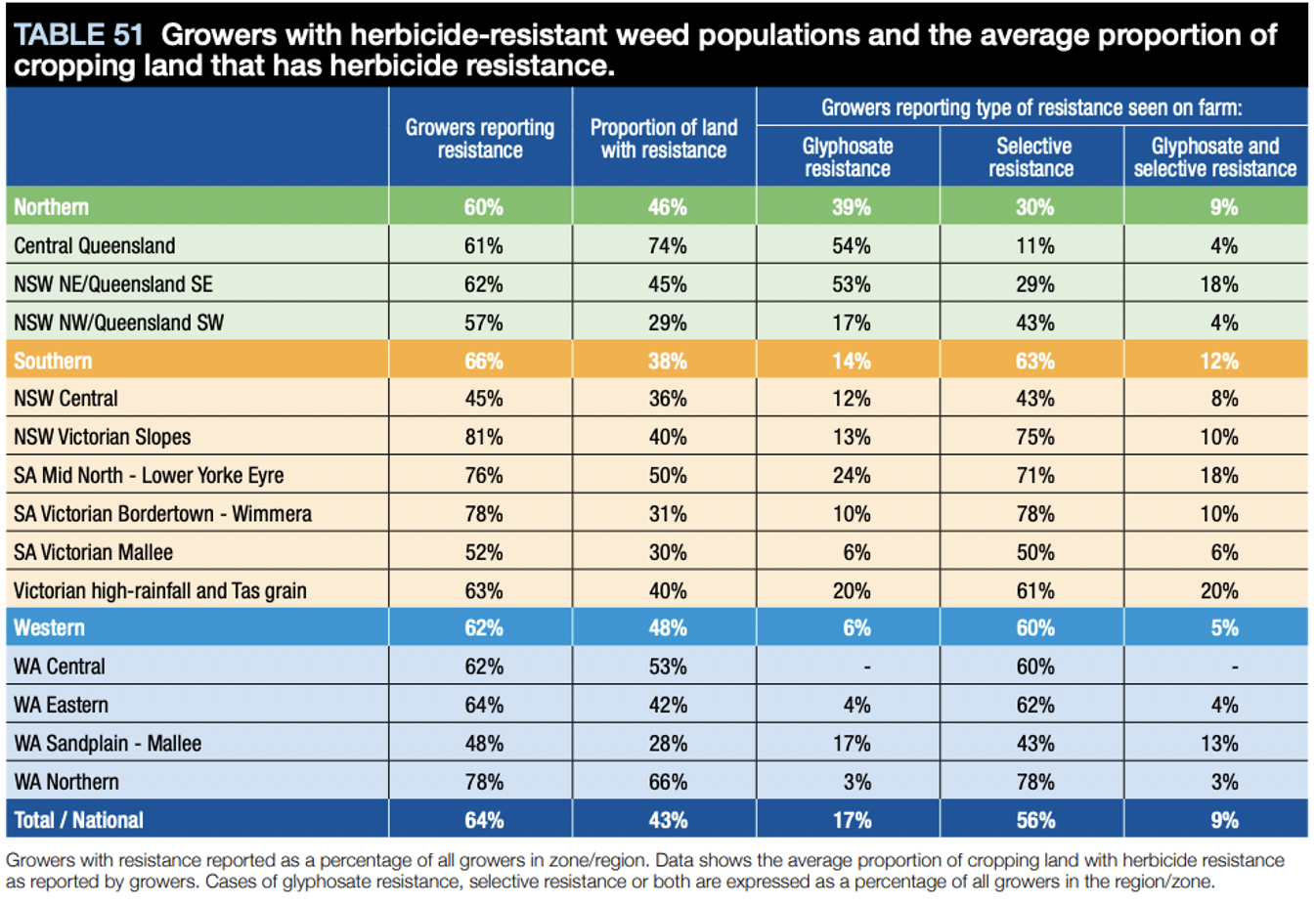Herbicide resistance is a major issue for farmers across the world, impacting yield, profit and the overall health of agricultural land.
The 2016 “Impact of Weeds on Australian Grain Production” study is just one example of how extensive the issue of weed resistance is, quantifying the proportion of growers reporting resistance both regionally and nationally.
KG2 Conducted this Study on behalf of the Grains Research and Development Corporation (GRDC), speaking to 600 Australian growers across 13 major agroecological Zones in Western, Southern and Northern growing regions.
As seen in Table 51 below from the original report, 64% of growers nationally were reporting some form of weed resistance, with 56% reporting this resistance to be selective (Llewellyn et al., 2016).
This represents a major challenge for farmers, agribusiness stakeholders and crop protection companies who are trying to develop products to meet the specific needs of growers.
The complexity of this challenge is illustrated in Table 51 through the regional differences in reported resistance types (Llewellyn et al., 2016).
For example, in the Northern region alone, 39% of farmers reported glyphosate resistance, but when broken down on a more granular level, it can be seen that only 17% of farmers in the NSW NW/Queensland SW area reported this type of resistance, compared to 54% of farmers in Central Queensland (Llewellyn et al., 2016).
Impact of Weeds on Australian Grain ProductionSOURCE: Llewellyn RS, Ronning D, Ouzman J, Walker S, Mayfield A and Clarke M (2016) Impact of Weeds on Australian Grain Production: the cost of weeds to Australian grain growers and the adoption of weed management and tillage practices Report for GRDC. CSIRO, Australia.
Top 5 herbicide resistant weeds in terms of management costs
An interesting analysis derived from the study includes the ranking of herbicide resistant weeds nationally in Table 52 of the report (Llewellyn et al., 2016).
The table ranks these weeds for winter crops in terms of the “extra herbicide cost” they impose on Australian growers (Llewellyn et al., 2016).
The herbicide resistant weed costs is based on the “extent of resistance and additional herbicide application to manage the resistance” (Llewellyn et al., 2016).
Here are the weeds that ranked in the top 5:
1. Ryegrass
$103.2m in extra herbicide cost
2. Wild radish
$19.7m in extra herbicide cost
3. Wild turnip
$7.8m in extra herbicide cost
4. Wild oats
$6.2m in extra herbicide cost
5. Barnyard grass
$4.1m in extra herbicide cost
Agricultural research: uncovering insights into Australian agriculture
Understanding weed resistance issues and farm management pain points is crucial if we are to support productivity growth for the Agricultural industry.
Insights derived through farmer market research and the KG2 agricultural database serve as just one mechanism for enhancing the depth of knowledge surrounding national weed prevalence.
This can help to inform new product or service developments, alongside improvements in industry communication.
Understanding the needs of farmers and closing knowledge gaps within the industry is crucial for the improvement of enterprise management and land health overall.
For more information on surveying farmers and large-scale tracking studies in the Australian agricultural industry, get in touch today.
Read an updated paper on weed resistance, click here
SOURCE: Llewellyn RS, Ronning D, Ouzman J, Walker S, Mayfield A and Clarke M (2016) Impact of Weeds on Australian Grain Production: the cost of weeds to Australian grain growers and the adoption of weed management and tillage practices Report for GRDC. CSIRO, Australia.



Recent Comments